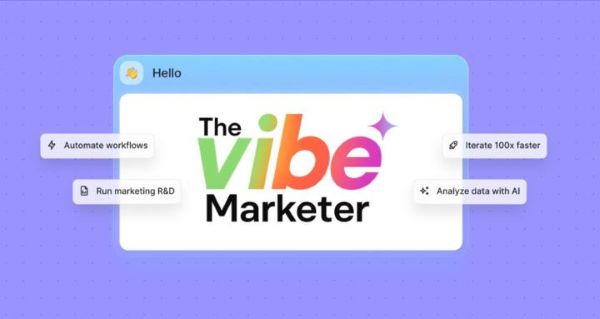No products in the cart.
[GroupBuy] The Vibe Marketers – James Dickerson
$199.00 $45.00
- Payment method: I will send the payment link to your email.
- Deliver by: Google Drive, Mega.nz
Category: Marketing
Table of Contents
1 year access
The Vibe Marketers are not just marketers; they’re cultural curators, trend forecasters, and digital alchemists, blending art and science to forge genuine connections in a world saturated with noise. They understand that marketing is no longer about shouting the loudest but resonating the deepest.
The Vibe Marketers
To understand The Vibe Marketers, we need to deconstruct the very essence of what “vibe” represents in the context of modern marketing. It’s more than just a feeling; it’s a calculated orchestration of aesthetics, values, and interactions designed to elicit a specific emotional response from a target audience. The Vibe Marketers operate on the premise that consumers are increasingly driven by how a brand makes them feel rather than simply what it sells. This shift necessitates a more nuanced and empathetic approach to marketing.
Defining the “Vibe” in Vibe Marketing
The “vibe” in vibe marketing isn’t some ethereal, undefinable quality. Instead, it’s a carefully curated atmosphere built around a brand’s core values and the aspirations of its target audience. Imagine a brand that champions sustainability and ethical sourcing. Their “vibe” might include earthy tones, visually representing natural elements, authentic storytelling featuring the artisans involved in their production process, and a commitment to transparency in their supply chain. This cohesive approach creates a feeling of trust, connection, and alignment with the brand’s mission, attracting customers who share those values. It’s about more than just selling a product; it’s about inviting people into a world they want to be a part of. In the context of The Vibe Marketers, this definition emphasizes that this is a strategic undertaking, not marketing based on trends.
On the flip side, brands failing to cultivate a distinct and congruent vibe risk alienating potential customers. Imagine a luxury car brand whose marketing materials feature overly ostentatious displays of wealth, coupled with questionable environmental practices. This inconsistency will likely lead to skepticism and distrust, even if the car itself is technically superior. The vibe, in this case, is off. It’s sending conflicting messages and ultimately failing to resonate with its target audience.
The Vibe Marketers excel at understanding these subtleties. They dissect the cultural landscape, identify emerging trends, and tap into the unspoken desires of consumers. They’re not just selling products; they’re selling a lifestyle, an aspiration, a feeling. This is where the art and science of marketing converge.
The Tactical Toolkit of a Vibe Marketer
The tactical toolkit of The Vibe Marketers extends far beyond traditional advertising. It encompasses a holistic approach that considers every touchpoint a consumer has with a brand. Here are some key elements:
- Visual Storytelling: High-quality imagery and video content that evokes specific emotions and reinforces the brand’s vibe. This is especially vital on visual platforms like Instagram and Pinterest.
- Experiential Marketing: Creating immersive experiences that allow consumers to directly interact with the brand and its vibe. Think pop-up events, interactive installations, and personalized activations.
- Community Building: Fostering a sense of belonging and shared identity among customers through online forums, social media groups, and real-world meetups.
- Influencer Collaboration: Partnering with influencers who embody the brand’s vibe and can authentically connect with their audience.
- User-Generated Content: Encouraging customers to share their experiences with the brand and showcasing this content to build trust and authenticity.
Consider a yoga apparel brand. Their vibe might be centered around wellness, mindfulness, and body positivity. To cultivate this vibe, they might:
- Create visually stunning content showcasing diverse body types practicing yoga in serene outdoor settings.
- Host free yoga sessions in local parks.
- Build an online community where members can share tips, inspiration, and support.
- Partner with yoga instructors who promote body positivity and mindful living.
- Feature customer photos and testimonials on their website and social media channels.
This multi-faceted approach creates a powerful and consistent brand vibe that resonates with its target audience. The goal is to immerse consumers in the brand’s world, making them feel like they are part of something bigger than just a transaction.
Vibe Marketing and the Death of Traditional Marketing
Traditional marketing, characterized by mass advertising and generic messaging, is increasingly losing its effectiveness in today’s fragmented media landscape. Consumers are bombarded with thousands of marketing messages every day, and they have become adept at filtering out the noise. The Vibe Marketers recognize this shift and are pioneering a new approach that prioritizes authenticity, personalization, and emotional connection.
One of the biggest shortcomings of traditional marketing is its reliance on interruption and repetition. Think of the barrage of television commercials, radio ads, and pop-up banners that disrupt our daily lives. These tactics are becoming increasingly intrusive and irritating, and they often fail to resonate with consumers on a deeper level.
In contrast, vibe marketing seeks to attract consumers through shared values and experiences. It’s about creating content that is genuinely valuable and engaging, rather than simply trying to sell a product. This approach builds trust and loyalty, leading to long-term customer relationships.
The rise of social media has further accelerated the shift towards vibe marketing. Social media platforms provide brands with unprecedented opportunities to connect with their target audience on a personal level. By sharing authentic content, engaging in conversations, and building communities, brands can create a strong vibe that resonates with potential customers.
Take, for example, the skincare brand Glossier. Glossier has built a massive following by prioritizing user-generated content, engaging in authentic conversations on social media, and creating a strong sense of community among its customers. Their vibe is all about inclusivity, self-care, and effortless beauty, and this resonates deeply with their target audience of millennial and Gen Z women. This resonates to what The Vibe Marketers do in marking and give a different perspective.
Counterarguments and Criticisms of Vibe Marketing
While vibe marketing holds immense potential, it’s not without its critics and potential pitfalls. Key among these is the risk of superficiality and inauthenticity. If a brand attempts to force a vibe that doesn’t align with its core values or its products, consumers will quickly see through it. This can lead to a backlash and damage the brand’s reputation.
Another challenge is measuring the effectiveness of vibe marketing. Traditional marketing metrics, such as website traffic and sales conversions, may not fully capture the impact of a brand’s vibe. It’s often difficult to quantify the intangible benefits of building a strong brand identity and fostering emotional connections with customers.
Furthermore, vibe marketing can be more resource-intensive than traditional marketing. It requires a significant investment in content creation, community building, and experiential marketing. Brands need to be willing to dedicate the time and resources necessary to cultivate a genuine and engaging vibe.
Despite these challenges, the potential rewards of vibe marketing are significant. Brands that can successfully cultivate a strong and authentic vibe will be well-positioned to thrive in the evolving marketing landscape. The Vibe Marketers should focus building good relationship to customers for long-term branding that give the brand a significant impact in the evolving marketing.
James Dickerson
James Dickerson, as a self-proclaimed “boring marketer,” presents a fascinating case study in the evolution of marketing thinking. His embrace of automation, AI, and the concept of “vibe marketing” suggests a deep understanding of the need for efficiency and emotional resonance in the modern digital age. But who is this “boring marketer,” and what makes his approach to vibe marketing unique?
Deconstructing the “Boring Marketer” Persona
The label of “boring marketer” is, in itself, a clever marketing tactic. It’s a self-deprecating acknowledgement of the perception that traditional marketing can be formulaic, uninspired, and, well, boring. By embracing this label, James Dickerson immediately sets himself apart from the crowd of flashy, self-proclaimed marketing gurus. It suggests humility, a focus on results over hype, and perhaps a willingness to challenge conventional wisdoms. This is what The Vibe Marketers should know about embracing and becoming something bigger in digital era.
The use of “boring” could also imply a focus on the fundamentals. It suggests a marketer who understands the importance of data analysis, market research, and strategic planning. These are the unglamorous but essential building blocks of any successful marketing campaign. James Dickerson is also not just building random ideas. He is establishing fundamental basis of effective marketing.
Combining this with the embrace of automation and AI, the “boring marketer” persona takes on a new dimension. It suggests a marketer who is not afraid to leverage technology to streamline processes, improve efficiency, and gain a deeper understanding of customer behavior. This is a marketer who is willing to experiment with new tools and techniques, but always with a focus on delivering tangible results.
This persona is particularly appealing in a world where marketing is often perceived as being overly creative and subjective. Many businesses are looking for marketers who can demonstrate a clear return on investment and provide data-driven insights that can inform strategic decision-making. James Dickerson‘s approach to make new insight for marketers.
The Role of Automation and AI in James Dickerson’s Vibe Marketing
The integration of automation and AI is a crucial element in James Dickerson‘s approach to vibe marketing. He sees these technologies as tools that can amplify and enhance the human element of marketing, rather than replace it. Automation can handle repetitive tasks, such as email marketing and social media scheduling, freeing up marketers to focus on more creative and strategic activities like crafting compelling narratives and building genuine relationships with customers.
AI can be used to analyze vast amounts of data, identify patterns and trends, and personalize marketing messages to individual customers. This level of personalization is essential for creating a vibe that resonates with consumers on a deeper level. For example, AI can be used to recommend products based on a customer’s past purchases, browsing history, and social media activity. It can also be used to personalize email subject lines and content based on a customer’s interests and preferences.
However, James Dickerson also recognizes the importance of human oversight and ethical considerations when using automation and AI. He emphasizes the need to ensure that these technologies are used responsibly and that they do not perpetuate bias or discrimination. The best approach is to make it as tools for marketing and not to rely on it.
One of the biggest challenges of using AI in marketing is ensuring that the technology remains transparent and accountable. Consumers need to understand how their data is being used and have the ability to opt out if they choose. Brands also need to be transparent about the limitations of AI and ensure that human marketers are always available to provide support and answer questions.
Practical Application of James Dickerson’s Ideas, Workflows, and Tactics
The heart of James Dickerson‘s message lies in the practical application of vibe marketing. He emphasizes the need for concrete ideas, workflows, and tactics that marketers can learn and implement. This is a departure from the often abstract and theoretical discussions that dominate the marketing world.
His focus on ideas suggests a constant drive for innovation and experimentation. He encourages marketers to challenge conventional wisdoms, think outside the box, and explore new ways to connect with consumers. This requires a willingness to take risks and learn from failures. Ideas are a great weapon for The Vibe Marketers to succeed.
His emphasis on workflows highlights the importance of efficiency and organization. He advocates for creating streamlined processes that allow marketers to focus on the most impactful activities. This includes automating repetitive tasks, using project management tools to track progress, and establishing clear lines of communication between team members.
His focus on tactics underscores the need for action and implementation. He believes that marketing is not just about strategy and planning, but also about execution and results. This requires a deep understanding of the various marketing channels, a willingness to experiment with new formats and technologies, and a relentless focus on measuring results. Here are some tactics for The Vibe Marketers:
- Identify the Target Audience: What are their values, interests, and aspirations?
- Define the Brand’s Core Values: What does the brand stand for, and how does it want to be perceived?
- Craft a Compelling Narrative: What is the brand’s story, and how can it be told in a way that resonates with the target audience?
- Create Visually Stunning Content: Use high-quality imagery and video to evoke specific emotions and reinforce the brand’s vibe.
- Build a Community: Foster a sense of belonging and shared identity among customers through online forums, social media groups, and real-world meetups.
Contrasting with Traditional Marketing Approaches
James Dickerson‘s self-identification as the “boring marketer” automating growth with AI workflows/agents is a striking contrast to the often-glamorized and creative-centric image of traditional marketing. This positioning highlights several key differences:
- Data-Driven Decisions vs. Gut Feeling: Traditional marketing often relied heavily on intuition and creative instincts. James Dickerson promotes data-driven decisions, analyzing data to understand customer behavior and campaign effectiveness.
- Efficiency and Scalability vs. Manual Efforts: Automating growth with AI enables efficiency and scalability. Traditional marketing often involved manual tasks and less data for marketers with a boring point.
- Personalization vs. Mass Marketing: James Dickerson emphasizes personalization through AI workflows, creating targeted messaging. Traditional marketing often employed mass marketing strategies with generic messaging.
- Continuous Optimization vs. Static Campaigns: AI and data-driven approaches allow for continuous optimization of campaigns based on performance insights. Traditional marketing campaigns were often static and less adaptable.
This contrast suggests that James Dickerson and The Vibe Marketers represent a new breed of marketers who are more analytical, efficient, and technologically savvy. They are not afraid to challenge conventional wisdoms and embrace new tools and techniques to achieve better results. It is the way for the future, the world is evolving.
Conclusion
The Vibe Marketers, as exemplified in the concepts advanced by figures like James Dickerson, represent a significant evolution in marketing philosophy. The emphasis shifts from mere product promotion to cultivating genuine connections with audiences through a carefully crafted brand “vibe,” leveraging technology like AI for efficiency and personalization, and prioritizing data-driven decision-making over traditional gut feeling. This approach, contrasting sharply with conventional marketing’s mass appeal, promises a more resonant and sustainable engagement with consumers in the modern, hyper-connected world, demanding authenticity and strategic application of innovative marketing methodologies.
Sales Page:_https://www.skool.com/the-vibe-marketers
Delivery time: 12 -24hrs after paid
Be the first to review “[GroupBuy] The Vibe Marketers – James Dickerson” Cancel reply
Related products
$85.00
$20.99
$25.00











Reviews
There are no reviews yet.